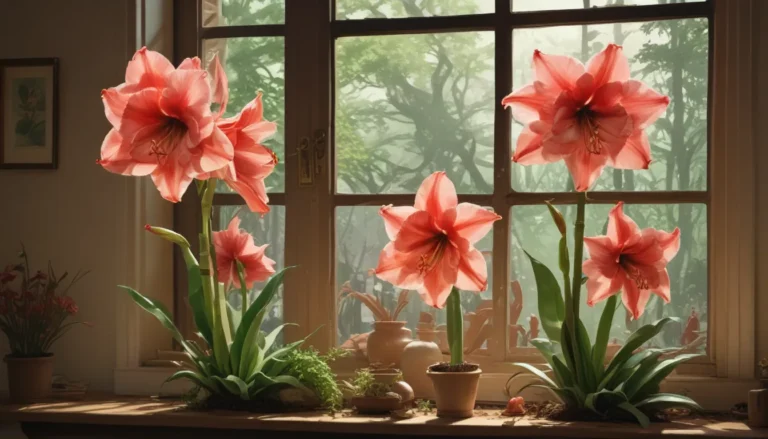Comprehensive Guide to Growing and Caring for Bird’s Nest Ferns

If you’re looking for a low-maintenance yet visually striking plant to add to your indoor collection, look no further than the exquisite bird’s nest fern. The charm of its large, bright green fronds forming a rosette of foliage with a nest-like center is hard to resist. And the best part? It’s easy to care for, making it a perfect choice for beginners.
In this comprehensive guide, we will delve into all aspects of growing and caring for bird’s nest ferns, from understanding the different species to propagation, maintenance, and more. So let’s get started!
What You’ll Learn
Here’s a preview of what you can expect from this informative guide:
- Understanding Bird’s Nest Ferns
- Overview of Asplenium spp.
- Cultivation and History
- Propagation Techniques
- Growing Conditions
- Useful Growing Tips
- Maintenance Guidelines
- Species and Cultivars to Consider
- Managing Pests and Disease
- Best Uses for Bird’s Nest Ferns
- Quick Reference Growing Guide
Understanding Bird’s Nest Ferns
Bird’s nest ferns belong to the Asplenium genus, which comprises around 700 species. While many ferns share similar characteristics, the A. nidus species is often the one that comes to mind when referring to bird’s nest ferns. Originating from regions such as Africa, Asia, and Australia, these epiphytic plants are known for their distinctive nest-like appearance created by the dense cluster of fronds at the center.
One important tidbit to note is that bird’s nest ferns are pet-friendly and nontoxic, making them a safe choice for households with furry friends. In fact, these ferns are edible, which adds to their unique appeal.
Cultivation and History
While bird’s nest ferns are undoubtedly aesthetically pleasing, they also hold cultural significance. Not only were they popular during the Victorian era when houseplants reigned supreme, but they also served as a source of food in various regions like Polynesia, Malaysia, and Taiwan. The young fronds and shoots of these ferns were consumed as vegetables, highlighting their multifaceted nature.
Bird’s Nest Fern Propagation
When it comes to propagating bird’s nest ferns, you have several options at your disposal. From growing them from spores, which can be challenging but rewarding, to propagating through cuttings, this section will guide you through the different methods. Whether you choose to start from scratch or purchase established plants from nurseries, bird’s nest ferns offer versatility in propagation.
How to Grow Bird’s Nest Ferns
Understanding the ideal growing conditions is crucial for the successful cultivation of these ferns. Bird’s nest ferns thrive in bright, indirect light, making them perfect for spaces with filtered sunlight. Their preference for slightly acidic soil with good drainage ensures optimal growth, while moderate watering and occasional feeding with a balanced fertilizer contribute to their overall health.
Species and Cultivars to Select
Exploring the diverse range of bird’s nest fern species and cultivars adds a layer of intrigue to your plant collection. From distinguishing between A. australasicum and A. nidus to discovering unique cultivars like ‘Campio,’ ‘Crissie,’ and ‘Osaka,’ there is a wealth of options to suit your preferences. Each species and cultivar brings its own charm and characteristics, allowing you to personalize your indoor oasis.
Managing Pests and Disease
While bird’s nest ferns are relatively resilient, they are susceptible to pests such as mealybugs and scale, as well as diseases like bacterial blight and root rot. By following preventive measures like quarantining new plants and practicing regular inspections, you can minimize the risks of infestations and infections. This section provides insights into identifying and addressing common issues that may arise.
Best Uses for Bird’s Nest Ferns
Bird’s nest ferns offer versatility in their application, whether grown as standalone specimens or mounted on wood or bamboo. Their adaptability to compact containers makes them ideal for adding a touch of greenery to small spaces or decorative pots. The diverse range of uses makes these ferns suitable for various indoor settings, allowing you to explore creative ways to showcase their beauty.
In Conclusion
With its effortless charm and vibrant foliage, the bird’s nest fern is a standout choice for both novice and experienced plant enthusiasts. By following the tips and guidelines outlined in this comprehensive guide, you can cultivate and care for these ferns with confidence. Whether you’re looking to enhance your indoor jungle or embark on a new plant journey, bird’s nest ferns offer a delightful addition to any home.
So why wait? Dive into the world of bird’s nest ferns and let these exquisite plants transform your living space into a lush sanctuary!
Have you grown bird’s nest ferns before? Share your experiences in the comments below!
And for more plant care tips, check out our other guides:
– How to Grow and Care for Staghorn Ferns
– How to Grow and Care for Kangaroo Ferns
– Boston Fern Care Guide: Grow this Easy-Care Houseplant
Remember, the key to successful bird’s nest fern care lies in understanding their unique needs and providing the right growing conditions. By following the insights shared in this guide, you can cultivate healthy and vibrant ferns that will enrich your indoor environment. So go ahead, embark on your bird’s nest fern journey and watch these captivating plants thrive in your home.





